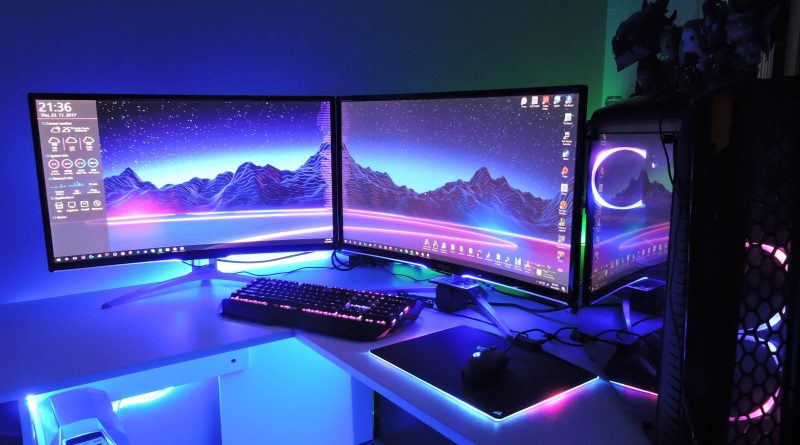144Hz vs. 60Hz Laptop Monitors: Is the Upgrade Worthwhile?
Have you ever found yourself wanting just a little bit more from your notebook’s display? Maybe games and videos don’t look quite as smooth as you’d like, or work feels a bit sluggish. If you’ve been thinking about upgrading your notebook’s screen, you may have come across mentions of high refresh rate displays and wondered: is doubling the refresh rate from 60 Hz to 144 Hz monitor really going to make that much of a difference?
In this blog post, we’ll take a deeper look at the differences between 60Hz and 144Hz monitors, explore the potential benefits of upgrading, and help you decide if boosting your refresh rate is worthwhile for how you use your notebook.
Refresh Rates Explained—What Do Those Numbers Mean Anyway?
The refresh rate, measured in hertz (Hz), refers to how many times per second a display can redraw the image being shown. A 60Hz display refreshes 60 times every second, while a 144Hz display refreshes 144 times per second.
At first glance, doubling the refresh rate from 60 Hz to a 144 Hz monitor sounds pretty significant, but to really understand the impact, you need to know a bit about how our eyes and brains process visual information. When watching video, your eyes receive information in discrete frames shown in rapid succession.
At 144 Hz, each frame only lasts for around 7 milliseconds before being updated. This results in much smoother motion with less blur between frames.
Smoother Motion for Gaming Monitor and Video
One of the biggest advantages of a 144-hertz monitor is how much smoother fast-paced games and videos will look. Whether you’re fragging opponents in an FPS or following the action in a sports game, everything from character movements to camera pans will appear incredibly fluid and life-like compared to 60Hz.
- At 60 Hz, each frame is displayed for around 17 milliseconds before being replaced. At 144 Hz, frames only last around 7 milliseconds. This results in much less motion blur between frames, making fast-paced action look incredibly smooth.
- In first-person shooters, characters and enemies will appear blur-free even during rapid turning and movement. You’ll be able to easily track projectiles and react more quickly to what’s happening on screen.
- Third-person action games and platformers also benefit tremendously. Jumping, attacking enemies, navigating obstacles—all look buttery and responsive at 144Hz versus more laggy at 60Hz.
- Sports games like FIFA and NBA 2K shine at high refresh rates. Players zooming up and down the field or court will be rendered with zero motion blur or stutter. You’ll be able to follow the ball or puck more easily.
- Racing and flight simulators are a blast to play at 144 Hz. At high speeds, everything from landscapes to your vehicle’s movements will be silky smooth with no juddering.
- Even real-time strategy games feel snappier when dragging and zooming the camera across the map at 144 Hz. Units and structures are rendered blur-free during combat.
- MOBA games also see huge benefits. Juking opponents and tracking dozens of abilities during intense teamfights is much easier on the eyes at over 100 Hz.
High-speed scenes from movies and TV shows that may appear choppy at 60 Hz will be rendered beautifully at 144 Hz. Fast pans, car chases, explosions—they all look incredibly cinematic.
Benefits Beyond Entertainment: Working and Browsing Too
While gaming is often cited as the top reason to upgrade to a 144Hz monitor, you may be surprised at other areas that can benefit as well. General system responsiveness and mouse/cursor movement will appear much smoother at 144 Hz.
Things like dragging and resizing windows, scrolling through web pages or documents, and animations will all feel snappier. If your work involves any graphics/video editing, the benefits of buttery-smooth on-screen motion are easily apparent.
Even basic tasks like browsing the web can be more pleasant on a screen with a higher refresh rate. Scrolling long pages and zooming in and out of images loses their choppiness.
Higher Refresh Rate Displays for Laptops: Options and Considerations
While 144Hz monitors were previously limited to high-end gaming desktops, they are now becoming more widely available for notebooks as well. When considering an upgrade, there are a few factors to take into account beyond just the refresh rate specification:
- Screen Size: 144Hz panels are readily available for 15-inch notebooks but may be harder to find or more expensive for larger 17-inch models.
- Resolution: Higher resolutions like QHD (2560×1440) and UHD (3840×2160) are still rare at 144 Hz and often require compromising other specs. FHD (1920×1080) offers the most options.
- Response Time: Look for a 1 ms response time or lower for minimal ghosting during fast motion. Some cheaper panels have 4-5 ms, which can be more blurry.
- Adaptive Sync: G-Sync compatible or FreeSync support eliminates screen tearing when frame rates vary below the maximum refresh.
- Price: Expect to pay $100-$300 more than a comparable 60Hz model, though prices are coming down over time.
With the right laptop, a high refresh rate display can be well worth the investment if you do a lot of gaming, video, or fast-paced work. Just be sure other specs, like the GPU, can handle pushing high frame rates.
Is It Worth It for You? Time to decide!
By now, you should have a good idea whether upgrading your notebook’s display to a 144Hz panel makes sense for how you use your machine. For gamers or those who watch a lot of fast-paced video, the buttery-smooth experience is hard to beat.
Final Words
With options now available across price ranges, 144Hz displays are becoming more mainstream for laptops. For many, the superior motion clarity and responsiveness they provide are worth paying a bit extra for. However, 60 Hz remains perfectly fine for general use if you’re on a budget. Do your research to find the right high-refresh panel that fits your laptop and needs.

